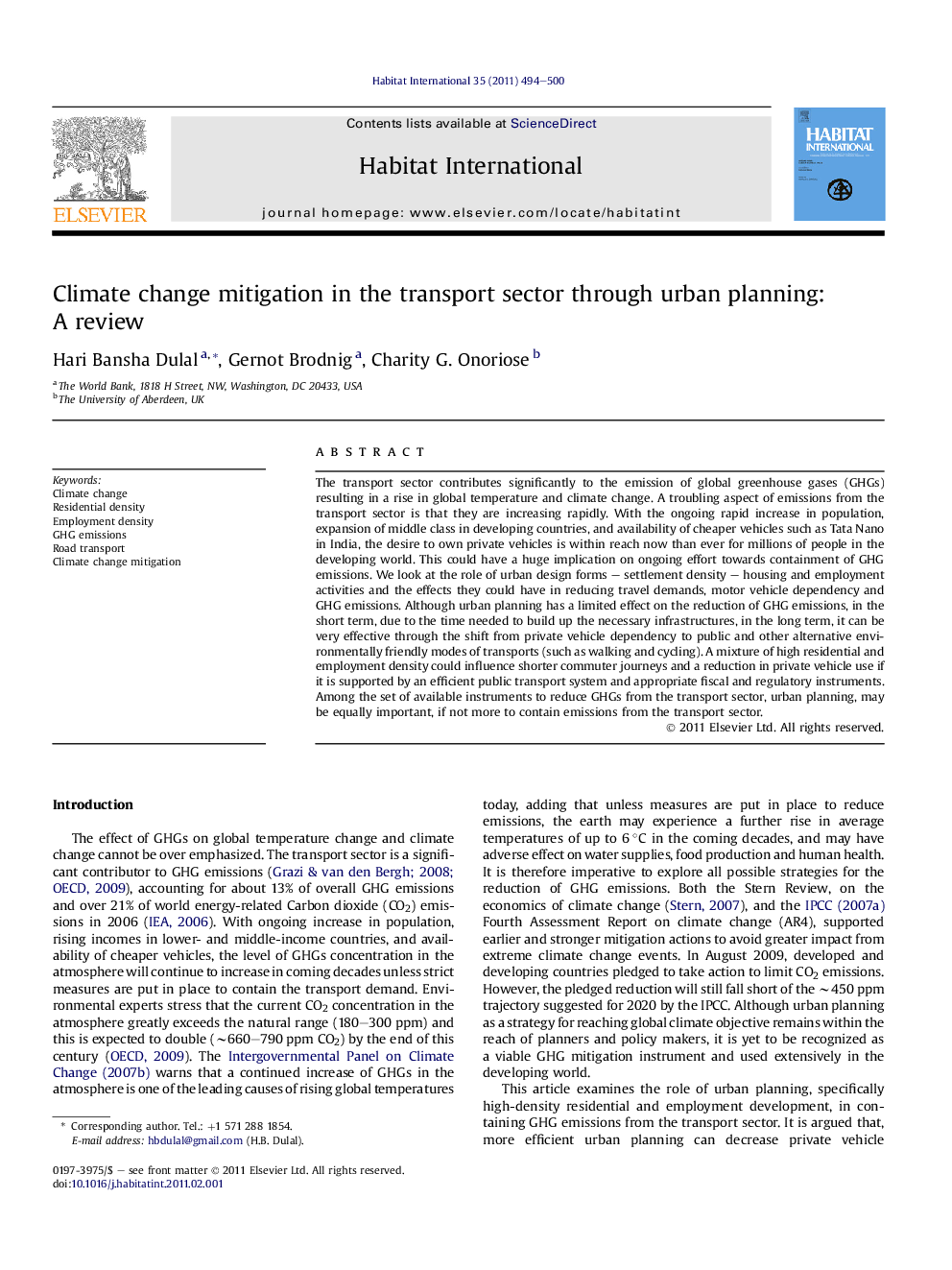| Article ID | Journal | Published Year | Pages | File Type |
|---|---|---|---|---|
| 1048167 | Habitat International | 2011 | 7 Pages |
The transport sector contributes significantly to the emission of global greenhouse gases (GHGs) resulting in a rise in global temperature and climate change. A troubling aspect of emissions from the transport sector is that they are increasing rapidly. With the ongoing rapid increase in population, expansion of middle class in developing countries, and availability of cheaper vehicles such as Tata Nano in India, the desire to own private vehicles is within reach now than ever for millions of people in the developing world. This could have a huge implication on ongoing effort towards containment of GHG emissions. We look at the role of urban design forms – settlement density – housing and employment activities and the effects they could have in reducing travel demands, motor vehicle dependency and GHG emissions. Although urban planning has a limited effect on the reduction of GHG emissions, in the short term, due to the time needed to build up the necessary infrastructures, in the long term, it can be very effective through the shift from private vehicle dependency to public and other alternative environmentally friendly modes of transports (such as walking and cycling). A mixture of high residential and employment density could influence shorter commuter journeys and a reduction in private vehicle use if it is supported by an efficient public transport system and appropriate fiscal and regulatory instruments. Among the set of available instruments to reduce GHGs from the transport sector, urban planning, may be equally important, if not more to contain emissions from the transport sector.
